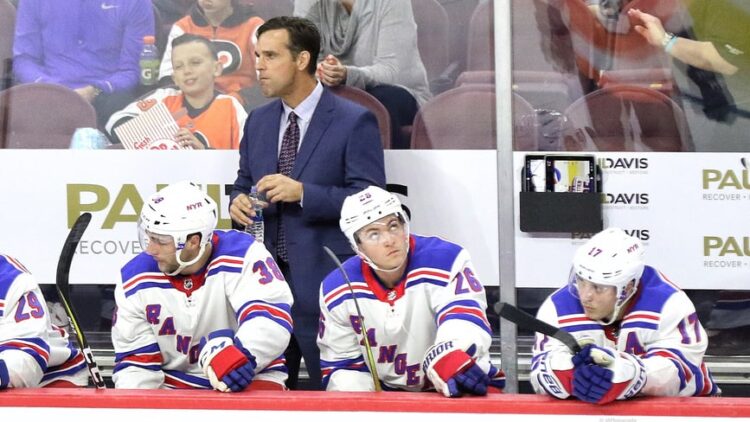
As the season progresses, one area of concern is that the Rangers are still hemorrhaging shots against, and dangerous ones at that, while not exactly sustaining offensive pressure. It is a continuation of last year’s concerns, where the offense would go dry for long stretches and the Rangers would play most of the game in their end. The Alain Vigneault era has ended, and thus this brand of hockey was supposed to end.
If you look at the numbers, the Rangers currently sport very underwhelming possession stats (all per Natural Stat Trick):
- CF%: 46.49% (27th)
- SCF%: 50% (18th)
- HDCF%: 51.88% (12th)
These numbers are basically in line with the final years of AV. The Rangers don’t sustain offensive zone time, as shown in their CF%. However, the chances they do get are pretty solid chances, as shown in the SCF% and HDCF% numbers. Yet for the start of the season, we have never really felt the Rangers are in control of any games, nor are they scoring as much. This is to be expected, since the skill level is significantly lower this year. The shooting percentage has dried up, and the goals aren’t coming.
For those wondering why the numbers under David Quinn are nearly identical to what we saw with Alain Vigneault, let’s recall what we saw when AV took over for John Tortorella. The Rangers were struggling to score consistently. They were getting absolutely torched defensively. The goaltending couldn’t keep them afloat. All of this was in October and November, with the low point being the two losses in San Jose and Anaheim by a score of 15-2. That run ended Martin Biron’s career.
But then November came and went. The Rangers adapted to AV’s new system, something they struggled with mightily to start the year. All of a sudden the numbers turned. From December through the end of the year, the Rangers were one of the best possession teams in the league, and they rode that new system to the Stanley Cup Final.
The same type of adjustment is going to happen under Quinn, save for June hockey. The Rangers are hardwired for AV’s man/overload hybrid system, and it takes time to reprogram them for Quinn’s more fundamental style. I don’t expect the Rangers to magically become one of the best possession teams in hockey, but I do expect them to stop giving up high danger chances in such drastic quantities.
For me, the numbers in October and November –both at the team level and individual level– tell a story, but they are not what this team will be at the end of the year. The trends we see from December through the end of the season, when the team has adjusted to the new system, will tell the story of where the team is going.
Maybe it’s the optimist in me, but I expect the Rangers to get closer to 50% in possession in that last two-thirds of the season. The numbers will tell two stories. What they were, and what we should expect going forward. Until then, it’s a bumpy ride.
Share:
More About:Analysis
